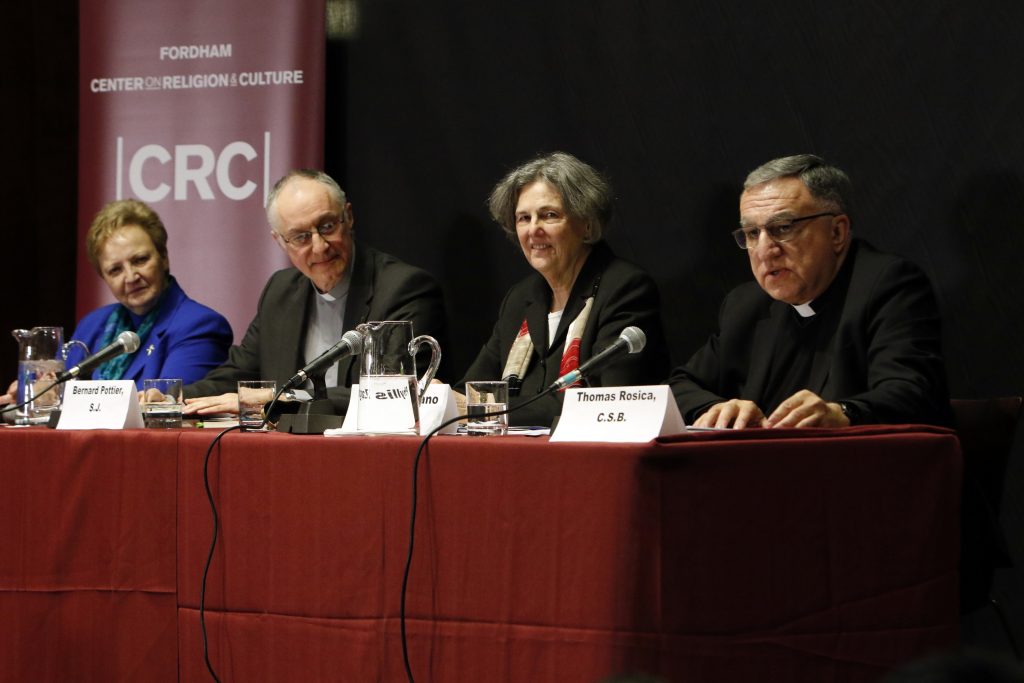By Christopher White, The Tablet’s National Correspondent

A new study released on Tuesday found that a high majority of U.S. Catholic bishops and deacon directors believe that if the Holy See gives the green light to ordination of women deacons, the United States Conference of Catholic Bishops (USCCB) would implement the practice.
The findings, however, also revealed that among respondents, only 41 percent of bishops and 50 percent of deacon directors believe women’s ordination to the diaconate to be theoretically possible, with only one-third of the bishops and two in five of the deacon directors responding that they personally believe the Church should do so.
Moreover, only 27 percent of both bishops and deacon directors believe that the Church will authorize the sacramental ordination of women as deacons.
The report, issued by the Center for Applied Research in the Apostolate (CARA) at Georgetown University, was conducted last fall light of Pope Francis’ establishment of a papal commission to study the historical question as to whether there were, in fact, women deacons in the early Church.
The commission, which was established in August 2016 and consisted of twelve members – six women and six men – and was headed by then-archbishop, now Cardinal Luis Francisco Ladaria, has submitted it to Pope Francis and it is under his consideration.
According to the new report, when respondents were asked whether they would implement the practice in their own diocese if the Holy See approves it, just over one-half of the bishops said yes, and more than six in ten of the deacon directors said that their bishop would implement this.
In summarizing their report, CARA co-authors Michal J. Kramarek and Jesuit Father Thomas P. Gaunt said that in their responses, “it appears that the bishops and deacon directors would positively respond to the sacramental ordination of women as deacons if the Holy See authorizes it, but they themselves do not believe the Holy See will do so.”
The role of the permanent diaconate, which was restored during the Second Vatican Council (1962-1965), has grown to over 45,000 deacons worldwide, with 18,000 in the U.S. alone.
Respondents to the CARA survey were overwhelmingly positive about the need for the permanent diaconate, with more than four in five bishops responding that they “agree somewhat” or “strongly agree” that “the permanent diaconate is needed now more than when it was first restored.”
There did, however, appear to be a split on whether the current numbers of permanent deacons are sufficient for ministry.
More than one-half of the bishops agreed that their diocese has a sufficient number of permanent deacons for its current need, while only three in ten deacon directors believe that to be the case.
Despite mixed responses on the possibility of women deacons, 64 percent of bishops responded that they “strongly agree” or “somewhat agree” that their diocese is committed to increasing women’s ecclesial leadership.
Last week, two of the members of the papal commission studying women’s deacons – Phyllis Zagano and Jesuit Father Bernard Pottier – spoke publicly for the first time at a panel discussion at Fordham University on the topic.
To date, it’s unknown when and if Pope Francis will formally respond to the commission’s findings.
“He will know the time to say something,” said Zagano, a senior research associate-in-residence and adjunct professor of religion at Hofstra University.
In 2002, the International Theological Commission, an advisory body to the Congregation for the Doctrine of the Faith, produced a document on the diaconate which considered whether women might be eligible for the role. Although the document did not draw any firm conclusion, it seemed to lean against the idea of female deacons.
Both Popes John Paul II and Benedict XVI faced the question of women deacons, with neither giving it the go ahead.
